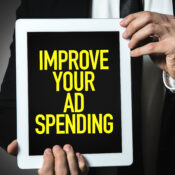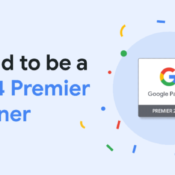/
/
Not “Can We?” but “HOW Can We?”
Dedicated to Greg - a clever marketing man and a wonderful friend to our company
As a digital advertiser, I have seen the impact a positive attitude can make. I’ve found one of the most potent ways to prime yourself for success is to frame challenges as questions of “how,” not “if.” To put it another way, think in terms of what you can do, not what you can’t.
I was reminded of how dire this is in a conversation with one of our most forward-thinking clients. Our friends on the dealership side of the relationship make requests that push us. One of our best qualities, I was told, is our approach to problem-solving. Because we don’t back down from challenges, we have been able to work with this account to drive SEM performance to surprising levels.
Can you increase impression share to 100%?
With the right mix of budget and organization, let’s see how high we can go. I certainly believe we can come close for the right keywords in the most essential locations.
Can you double our click through rates?
Let’s break out a segment of your account to experiment with higher intent keywords in the most productive locations and work with the ad copy and extensions. I expect we can find ways to improve. We may find elements that can be carried over to improve other campaigns as well.
Can you get more users to VDP pages?
We can look at how traffic moves through your site and suggest ways to smooth the path to VDP. We can also put more focus on the campaigns that are driving the most traffic to these detail pages*.
Regardless of the request, there are always things we can try. When we approach the problem with an open mind and a willingness to think more broadly, we make strides. Sometimes we’ll fall short of the requested outcome. However, in each instance, we’ll achieve more than we otherwise could, and we’ll become even better digital marketers for it.
Once we’ve identified ways to improve
*Remember the reason VDP views are valuable is as a step toward choosing and purchasing a vehicle. You don’t want to push users to vehicle details; you want to make it easy for them get the information they need, then to move beyond the informational stages.
Recent Posts
Mudd Advertising
Let’s leverage!
Mudd Advertising
Politics Schmolitics!
Mudd Advertising
Mudd has been promoted to Google Premier Partner
All Categories
Tags
anonymous website visitor identification
automotive
branding
cable
case study
chevrolet
chevy
data
digital marketing
direct marketing
display
dynamic inventory display
facebook
first party
google
google analytics
google premier partner
internet marketing
local seo
Matthew Moody
media
mobile search
mobile seo
MUDDid
online marketing
online video
organic
organic search
pay per click
political
ppc
promotion
retargeting
search engine marketing
search engine optimization
sem
seo
social advertising
social media
social media marketing
strategy
traditional marketing
traditional media
Volunteer Spotlight
youtube




